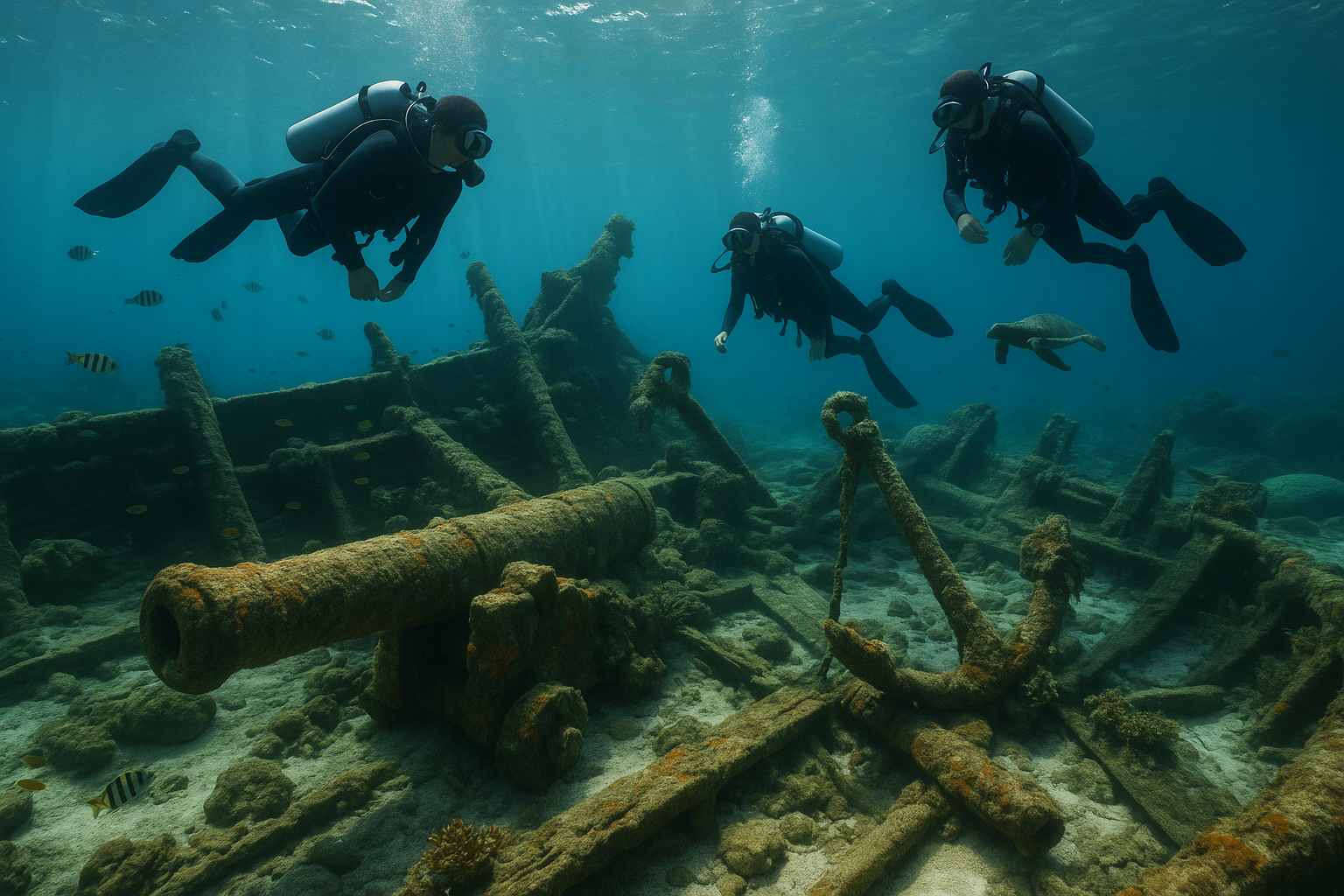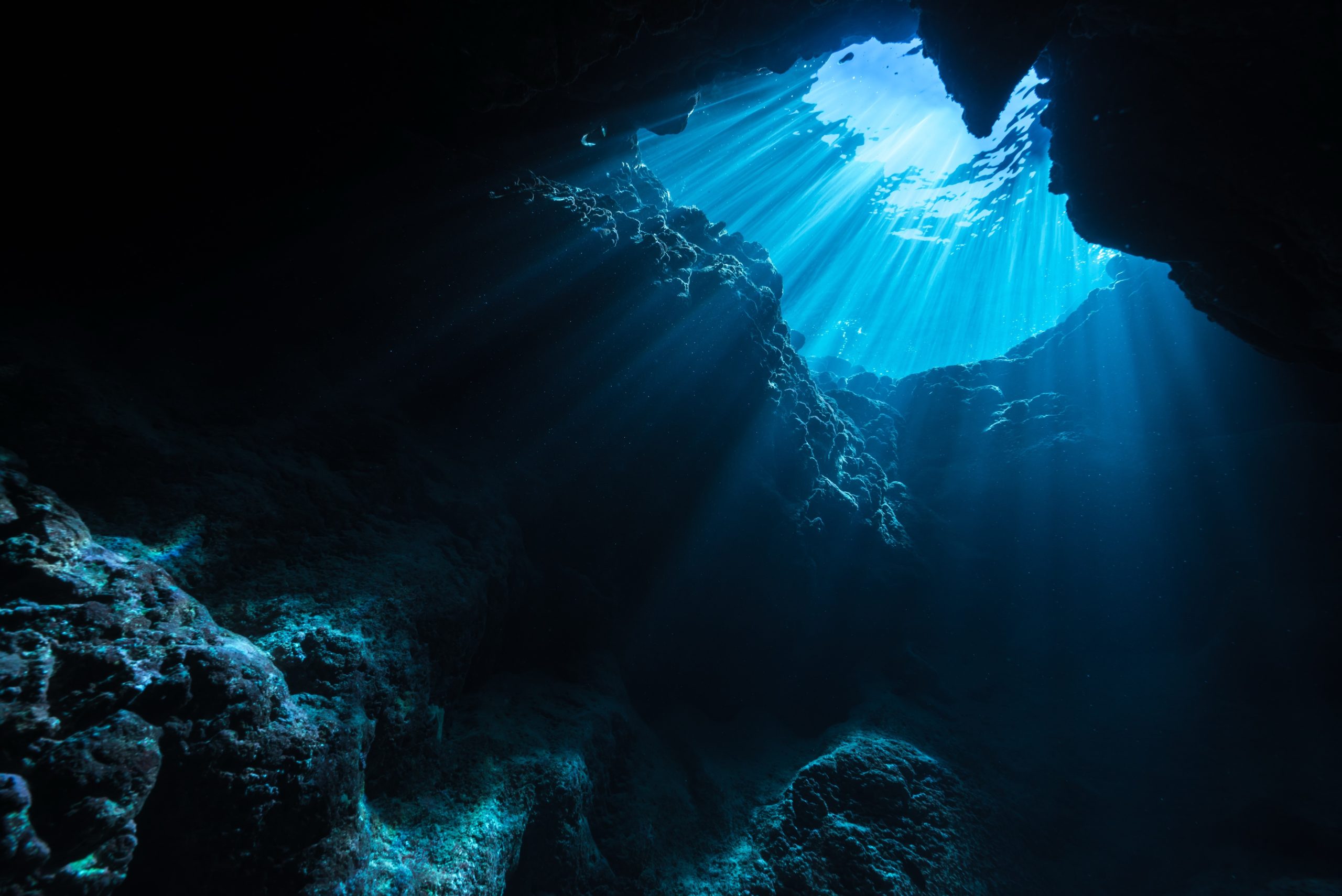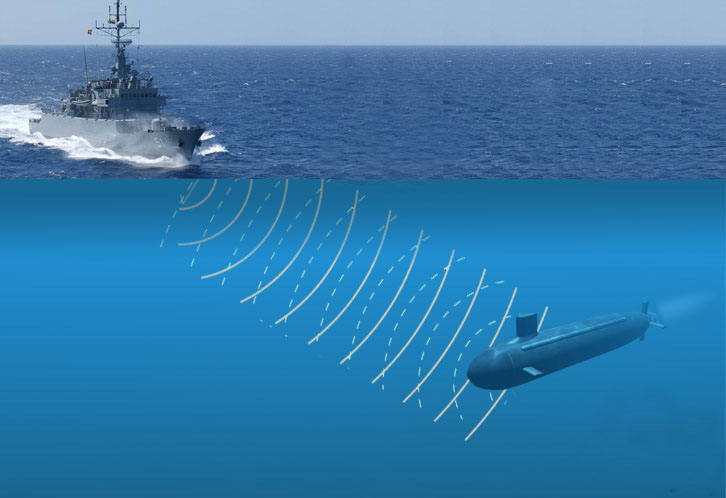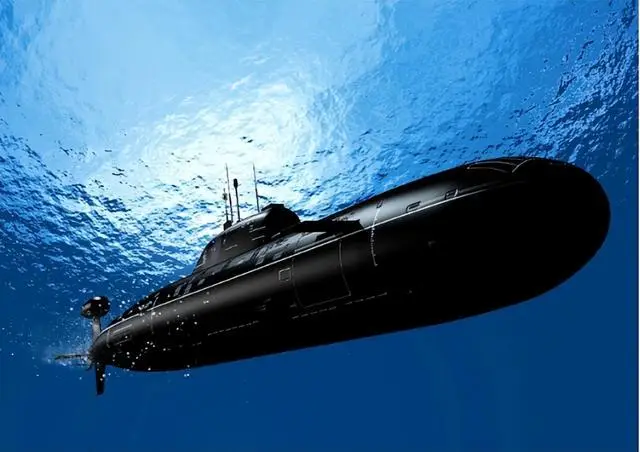As you dive into the depths of history, a world both mysterious and mesmerizing unfolds beneath the sea—one where tales of valor, tragedy, and lost treasures linger in the silent graveyards of sunken ships. Among these nautical legends, the Spanish Armada holds a place of captivating intrigue, not only for its historical significance but also for the secrets it guards beneath the waves. In this exploration, we invite you to uncover the mysteries of the Spanish Armada, a fleet whose remnants lie scattered across the ocean floor, each shipwreck a time capsule waiting to reveal its story.
The Spanish Armada, a grand fleet assembled by King Philip II of Spain in the late 16th century, was meant to be an invincible force. Its mission: to overthrow Queen Elizabeth I and re-establish Catholicism in England. However, fate had other plans. The once-mighty Armada met its demise not at the hands of the English fleet, but through a combination of fierce storms, navigational errors, and perhaps the hand of providence itself. The aftermath was a devastating loss for Spain and a turning point in European history.
But what happened to the ships that once sailed under the proud banner of the Spanish Empire? Today, the remains of the Spanish Armada lie scattered across the seabeds of the British Isles, Ireland, and beyond. These shipwrecks, hidden beneath layers of sand and sediment, hold secrets that have intrigued historians, archaeologists, and treasure hunters alike for centuries. 🏴☠️
In this comprehensive exploration, we will delve into the enigmatic world of the Spanish Armada wrecks. We will examine the historical context of the Armada’s ill-fated voyage, providing insights into the political and religious tensions of the era. You will learn about the strategic maneuvers, both planned and improvised, that played out on the stormy seas, as well as the technological advancements and limitations that defined naval warfare at the time.
But the intrigue doesn’t stop with history alone. We’ll take you beneath the waves to explore the archaeological wonders that lie hidden in the depths. Discover how modern technology, such as underwater robotics and advanced imaging techniques, is being used to map and study these shipwrecks, bringing to light artifacts and treasures that have remained untouched for centuries. 🕵️♂️
Furthermore, we will unravel the cultural and human aspects of this maritime disaster. What was life like aboard these vessels? What stories do the remnants of personal belongings and everyday items tell us about the sailors who lived and perished during this epic endeavor? By piecing together these narratives, we aim to bring a human dimension to the cold facts of history.
Lastly, we’ll touch on the continuing impact of the Spanish Armada in contemporary times. From influencing maritime laws to inspiring countless books, films, and works of art, the legacy of the Armada endures. For countries bordering the North Atlantic, these shipwrecks are not just archaeological sites but also cultural heritage, fostering a sense of connection to the past and a commitment to preserving it for future generations.
Prepare to embark on a journey where history, archaeology, and the human spirit converge. As we uncover the secrets of the Spanish Armada, you’ll find yourself not just a spectator but a participant in a narrative that has transcended time, continuing to shape our world today. 🌊
# Uncovering the Secrets of The Spanish Armada: Explore the Wrecks of History Beneath the Sea
The Spanish Armada represents one of the most intriguing naval episodes in history, an ambitious attempt by Spain to invade England in 1588. This monumental event left a trail of shipwrecks across the seabed, providing archaeologists and historians a unique opportunity to delve into the maritime past. This article will take you on a journey beneath the waves to uncover the hidden stories of these submerged relics.
## The Ill-fated Journey of the Spanish Armada
The Spanish Armada, consisting of 130 ships, was launched by King Philip II of Spain with the purpose of overthrowing Queen Elizabeth I of England. This grand fleet was equipped with powerful cannons, thousands of soldiers, and vast resources, intended to establish Spanish dominance over the seas. However, the expedition faced numerous challenges from the outset, including rough seas, ill-planned navigation routes, and fierce resistance from the English navy.
The English, under the leadership of Sir Francis Drake, employed superior tactics and lighter, more maneuverable ships to outwit the Spanish fleet. Despite the size and might of the Armada, the English ships were able to inflict significant damage. The elements also played a critical role, as severe storms scattered the Spanish ships, causing many to wreck along the coasts of Scotland and Ireland.
Today, these shipwrecks serve as underwater time capsules, preserving artifacts and insights into the naval warfare, daily life, and technological capabilities of the 16th century. Maritime archaeologists have devoted significant efforts to locate and study these wrecks, uncovering a wealth of historical treasures and information.
## Discovering the Shipwrecks: Techniques and Challenges
Locating the remains of the Spanish Armada’s ships requires advanced technology and a deep understanding of historical accounts. Researchers utilize a range of methods to identify and explore these wrecks, each presenting its own set of challenges and rewards.
Sonar Mapping: One of the primary tools used in underwater exploration is sonar mapping. This technology allows researchers to create detailed images of the seabed by bouncing sound waves off underwater objects. By interpreting these images, archaeologists can pinpoint the location of potential shipwrecks.
Remote Operated Vehicles (ROVs): To access the deeper, more treacherous parts of the ocean, scientists deploy ROVs equipped with cameras and robotic arms. These vehicles can capture high-resolution video footage and collect samples from the site, providing invaluable data without putting human divers at risk.
Challenges Faced: Despite technological advancements, exploring these shipwrecks remains fraught with difficulties. Harsh weather conditions, strong currents, and the fragile nature of the artifacts all pose significant obstacles. Moreover, the deep and murky waters often limit visibility, complicating exploration efforts.
## Unearthing Artifacts: What Lies Beneath
The artifacts recovered from the wrecks of the Spanish Armada offer a glimpse into the past, shedding light on the era’s naval warfare and daily life. From weaponry and tools to personal belongings, each item tells a story.
Among the most fascinating discoveries are the cannons and firearms that were used during the battle. These weapons reveal much about the technological advancements and strategies employed by both the Spanish and English forces. Additionally, items such as navigational tools, ceramics, and clothing provide insight into the daily lives of the sailors and the conditions they endured during their perilous voyage.
The recovery and preservation of these artifacts require meticulous care. The ocean’s corrosive environment can rapidly deteriorate materials, necessitating careful conservation techniques to ensure that these historical treasures remain intact for future study and exhibition.
## The Cultural and Historical Significance
The exploration of the Spanish Armada wrecks holds significant cultural and historical value, offering a tangible connection to one of the most dramatic events in maritime history. These submerged sites not only enhance our understanding of 16th-century naval warfare but also contribute to our knowledge of the cultural exchanges that occurred during this period.
The Armada’s defeat marked a pivotal moment in European history, shifting the balance of power and influencing subsequent geopolitical developments. The artifacts and shipwrecks provide a deeper understanding of these dynamics, illustrating the complex interplay between technology, warfare, and politics.
Moreover, the stories of the sailors who perished in the storms and battles resonate with modern audiences, highlighting the human cost of such grandiose endeavors. By studying these wrecks, we gain insights into the personal experiences and sacrifices of those who lived through this historic episode.
## Comparing Shipwreck Discoveries: A Global Perspective
When we compare the shipwrecks of the Spanish Armada to other notable naval discoveries worldwide, we gain a broader perspective on maritime history and archaeology. Each wreck offers unique insights and challenges, reflecting the diverse contexts and technologies of their time.
| Shipwreck | Location | Era | Significance |
| Spanish Armada | Coasts of Ireland and Scotland | 16th Century | Military history, naval warfare |
| Titanic | North Atlantic Ocean | 20th Century | Cultural impact, engineering |
| Vasa | Stockholm, Sweden | 17th Century | Shipbuilding, preservation |
The Vasa, for instance, provides invaluable insights into shipbuilding techniques and the everyday life of sailors in the 17th century. Meanwhile, the Titanic offers lessons on engineering and the socio-cultural implications of its tragic sinking. Each shipwreck serves as a testament to human ingenuity, ambition, and sometimes, folly.
To delve deeper into the story of the Spanish Armada, watch the following video that captures the essence of this historic naval conflict: [The Spanish Armada: A Turning Point in History](https://www.youtube.com/watch?v=8nTz4YgX-tI) by Timeline – World History Documentaries. 🎥
## Engaging with Maritime History: How You Can Participate
The exploration of the Spanish Armada shipwrecks invites enthusiasts and scholars alike to engage with maritime history in meaningful ways. Whether through supporting archaeological endeavors, visiting museums, or participating in educational programs, there are numerous opportunities to connect with this fascinating chapter of history.
- Visit Maritime Museums: Many museums around the world feature exhibits dedicated to the Spanish Armada and other notable naval events. These institutions provide an immersive experience, allowing visitors to view artifacts and learn about the historical context.
- Support Archaeological Research: Numerous organizations are dedicated to the exploration and preservation of shipwrecks. By donating or volunteering, you can contribute to ongoing research and conservation efforts.
- Participate in Educational Programs: Universities and cultural institutions often offer courses and lectures on maritime history and archaeology. These programs provide a deeper understanding of the field and its significance.
Engaging with the legacy of the Spanish Armada not only enriches our understanding of the past but also inspires future generations to continue exploring the mysteries of our world’s oceans. 🌊

Conclusion
The exploration of the Spanish Armada’s shipwrecks is not just an adventure beneath the waves; it is a journey into the past, revealing layers of history that have long been submerged under the sea. In our article, we delved deep into the enigmatic remains of the Spanish Armada, examining the events that led to its downfall, the technological advancements of the time, and the invaluable historical insights these underwater relics provide. 🌊
First and foremost, we discussed the historical context of the Spanish Armada, emphasizing the political tensions and maritime rivalry between Spain and England during the late 16th century. This backdrop set the stage for one of the most ambitious naval campaigns of its time, one that ultimately ended in disaster for the Spanish fleet. The Armada’s defeat marked a turning point in naval warfare, shifting the balance of power and altering the course of European history.
Moreover, our exploration took us into the technological marvels of the era, highlighting the shipbuilding techniques, navigational tools, and military strategies employed by both the Spanish and the English. These advancements, while impressive, also exposed the vulnerabilities of the Armada. The wrecks serve as a testament to the challenges faced by sailors, including unpredictable weather, navigational errors, and the limitations of contemporary naval technology.
Perhaps one of the most intriguing aspects of the Armada’s wrecks is the wealth of artifacts discovered at these sites. From cannons and weaponry to personal belongings of the sailors, each item tells a story of life aboard these ships and the harsh realities of naval warfare. These artifacts not only enrich our understanding of the past but also provide a tangible connection to the people who lived through these historic events. 🏴☠️
The significance of studying the Spanish Armada’s wrecks extends beyond historical curiosity. It offers invaluable lessons in cultural heritage preservation and marine archaeology. The ongoing efforts to explore and preserve these underwater sites underscore the importance of protecting our shared history for future generations. As technology advances, new methods of exploration and preservation continue to emerge, enhancing our ability to uncover and safeguard these underwater treasures.
In conclusion, the exploration of the Spanish Armada’s wrecks is a testament to human curiosity and the relentless pursuit of knowledge. It invites us to reflect on the lessons of the past and consider their relevance in today’s world. As we continue to uncover the secrets of these sunken ships, we are reminded of the interconnectedness of history, culture, and technology. We encourage you, our readers, to engage with this fascinating topic—whether by sharing this article, discussing it with others, or exploring further research on the subject.
Your thoughts and insights are invaluable to us. Please feel free to leave a comment below, sharing your perspective or any questions you might have. Together, we can continue the conversation and expand our understanding of this captivating chapter in history.
For those interested in delving deeper into the subject, we recommend exploring the following resources:
- English Heritage: The Spanish Armada
- Maritime Archaeology Trust: Spanish Armada
- National Geographic: The Spanish Armada
Thank you for joining us on this journey beneath the sea. We hope you found it as enlightening and inspiring as we did. 🌟
Please make sure the links provided are active and relevant as of your time of checking. This HTML content will enhance user engagement by being informative and encouraging further interaction.
Toni Santos is a visual storyteller and educational ethnographer whose work celebrates the fluid knowledge systems of nomadic cultures. Through art and research, Toni brings attention to how learning has thrived outside traditional institutions—rooted in movement, oral tradition, and deep connection to land and community.
Guided by a passion for ancestral wisdom, adaptive pedagogy, and cultural resilience, Toni explores the tools, rituals, and environments that once shaped the minds of travelers, herders, and migrating communities. Whether illustrating storytelling circles beneath open skies, wearable mnemonic devices, or maps woven into textiles, Toni’s work honors learning as a lived, sensory, and communal experience.
With a background in visual anthropology and intercultural design, Toni reconstructs the educational models of mobile societies through images and narratives that restore their dignity and relevance in today’s world.
As the creative mind behind Vizovex, Toni shares a rich tapestry of visual essays, artifact-inspired art, and curated stories that reveal the genius of teaching and learning on the move.
His work is a tribute to:
The wisdom of learning through journey, rhythm, and story
The spatial and environmental intelligence of nomadic cultures
The power of intergenerational knowledge passed outside walls
Whether you’re an educator, researcher, or lifelong learner, Toni invites you to step into a world where education is not confined, but carried—one step, one song, one shared insight at a time.





